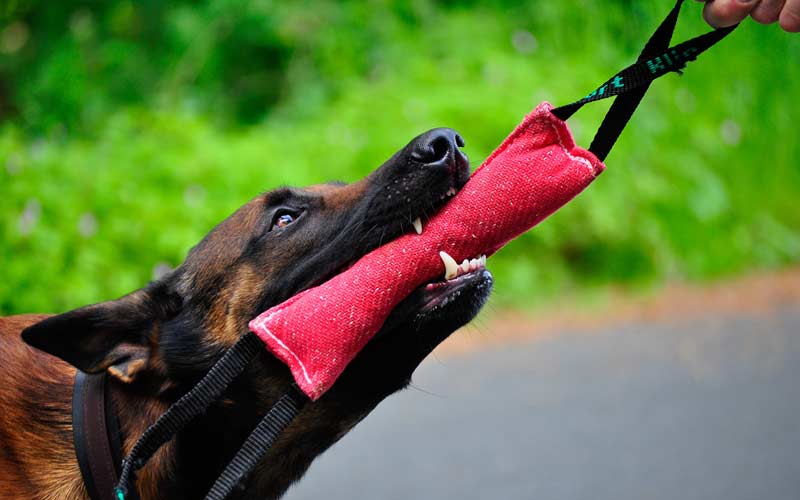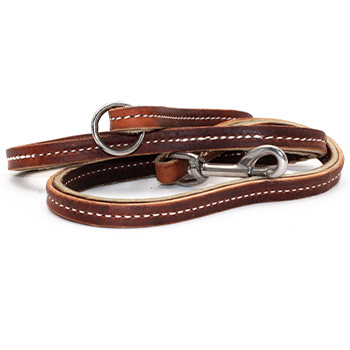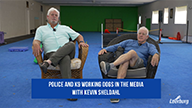The Essentials of a Canine Program

Foreword by Ed Frawley
I met Kevin Sheldahl in 1984 at a police K-9 school in Kansas. We have been good friends ever since. Kevin is a retired police K-9 handler. He became a K-9 Instructor and an International Police Dog Judge. Kevin's company K-9 Services runs 6-week police K-9 courses in which police officers learn how to become new K-9 handlers. To date, he has run 70 6-week courses and trained over 1,200 K-9 handlers. I don't know of another dog trainer that has Kevin's experience and knowledge of police service dogs training.
What does your canine program need?
This is a list of pertinent equipment and services, and covers about everything. This isn't a must have to get started list and often some of these items can be shared among many teams that work together.
A dog, for sure but often the devil is in the details! There are quite a few things that a patrol canine or dual purpose canine will need and here is a list of those needs.
Collar, fur saver type. This is best because any point on the collar is an attachment point for a lead. In a tense situation there isn't any fumbling for the D-ring on a leather flat collar, there is no hunting for the end ring on a diamond link collar.
Harness, used for tracking by many. We often use this as a tool in extractions. Depending on the harness it can be used for rappelling or even just as a handle during deployments (caution, if it is a handle for you it is a handle for a combative suspect).
Muzzle, this is used in training the dog for realistic deployments and developing the dog's fighting instincts. This type should be the German style basket muzzle (although a few dogs are very difficult to fit this way and a leather agitation muzzle will have to suffice).
Waist lead, this is a 40-42 inch lead worn around the waist tucked behind the Sam Browne and out of the way. Do not wear a lead draped over the should and latched to the side. We once called such a suspender used in the field a suicide strap.
Tab, or traffic lead, this is used as a handle to the collar for corrections, and also to carry in a pocket, or on your belt as a handle should you need it in deployment. Avoid anything long or with a loop. Your dog might catch a foot and get injured.
Long line, this is used in reinforcing commands, tracking, and at times wind scenting. This tool should be easy to grip, not collect debris, and not get slippery when soaked. The length could be anywhere from 15-33 feet. Occasionally a 50-foot-long line can be useful in specialty searches and extractions.
Light weight no handle lead, this only needs to be around a ½ inch wide and maybe 6 feet long. I use this to conduct sniffs for explosives and narcotics. It allows me to let the lead move smoothly through my hand and keep the dog searching without bouncing off the end of a too short lead.
Prong or pinch collars. Use Herm Sprenger collars. Other come apart too easily. Use the largest link size available (3.2mm) This collar is used as a positive punishment or as an escape and avoidance tool in most training applications although it also has some other functions in police work as well.
Crate, yes every dog handler should have a crate. At the minimum a plastic airline approved crate but even better is an aluminum or heavy duty crate. Large to extra large in size. You may need more than one, one for at home, one for the office etc. No, don't let your partner wander around the office…no don't even think of it.
Kennel, this should be installed at home and with a dig proof flooring. Like a cement slab, or paving stones, or a commercial flooring. The kennel should be welded wire or bars type construction and of around 6' x 12' in size (or 8'x10' or 10'x10'…you get the idea). Avoid chain link, many of these rough and tumble dogs find they can get their teeth on it and it will give, encouraging them to wear out their teeth or bust them off…this is really really expensive to deal with!! It should have a roof/ covering for both shelter and to prevent escape.
Dog house, of course this is important to get the dog out of the elements. Don't go cheapo on this. Get a good one. Some handlers opt to build their kennel along a shed or their garage and have a door installed so the dog can access an enclosed area inside. This would eliminate the need for a dog house.
Electronic training collar, this device has become almost a standard among law enforcement handlers. It needs to be a good collar. It needs to have both nick/momentary/tap and continuous functions. Don't worry about multi-dog, or bells, buzzers, whistles, pagers etc. This is just fluff. Get the longest range one sold by a company that offers the other features. Our favorite right now is the E-collar technologies 900 pro or the Dogtra 3500NCP single dog.
Vehicle insert, there are several companies selling these, American Aluminum, Havis, and others. This is designed for quick access to the dog and a safe ride. Many of these companies also sell the electronic temperature monitoring systems along with the inserts as well as fans, and water careers.
Temperature alarms, though these electronic devices are important never trust them completely. Lately we have had too many dogs pass away from heat in automobiles. Most often because handlers are not on top of the speed that a car interior can over heat. Also, when A/C fails it often begins to blow heated air into the vehicle. Ace is probably the largest vendor of such alarms. There is now a handful of alarms that can be placed on the dog or near the dog and run through a cell phone system. These seem promising.
Grooming supplies, of course an appropriate brush (pin brush for GSD's, slickers for malinois, DS's etc.) plus a good quality shampoo (hypo-allergenic is best).
Buckets, bowls for food and water, get stainless, heavy duty bowls and a good stainless 16 quart or larger bucket. I suggest hanging the bucket on the kennel with a double ended clip.
Toys, these of course are important. Tugs, made from leather, or synthetic material like used in bite suits are the best. Get several, you will need them. Now these are not toys the dog gets to possess. They are for training only. Never leave such an item with a dog! Using a ball for rewards is fine, though the act of tug is important so if you do get a 2 ½-2 ¾ inch ball that has a rope on it. I use two, mostly for exercise. Throw the ball across the field, repeat with the second ball, repeat. Wind sprints for the dog. Important exercise for your partner.
Molle gear for your dog such as harnesses covered in molle attachments and pouches…well just why?? I know, I know it looks tacticool. But, just why?
Dump pouch, maybe the handiest tool around. I like the ones that roll up in a discreet fashion on my belt. It should be big enough to hold a bottle of water or a long line, or a tug or two. This is a great way to stow things you need in the field and have a place for stuff you need to hand onto but can get in the way.
Nylon no bite muzzle, this is what the vet uses to keep from getting bit. They are inexpensive insurance and easy to throw into a pocket or drop pouch. If you need to get you dog into, or worse, out of an attic and he's a bit uncomfortable being man handled this can help. If you need a peer to hoist your dog over a fence or up onto something this makes everyone more comfortable. They use one simple clasp you can undo one handed.
First aid kit, you can get a fancy one for your dog or just add needed items to the one you should already be carrying for yourself or others. The most useful items? Vetwrap, peroxide, and that little nylon muzzle from above.
Training aid boxes, these are often pelican brand or similar knock off boxes with a good seal around the edge and foam to hold small bottles to label with what you need to detect. This should also include protective sacks of varying material to hold the substance (don't just stick the jars out with the substance setting inside. Pull the bags out, nylon, canvas, plastic, etc. and hide them please!).
Vehicle safe, some departments get really paranoid about security and want a safe to secure to the floor. These are available from places like American Aluminum and usually come with boxes and bottles combos to fit. I don't recommend this approach, if driving a SUV get a lock box for the back and put other sensitive items in it as well.
Ballistic/stab resistant vest. This is an interesting item. Initially many of these were so big bulky and unwieldy that I really couldn't get on board with them. Recently though I have found several vests…..some that are no charge through a non-profit organization that aren't too bad. In the climate I worked in using them all the time was a bit prohibitive and the ones I was given were absurd. I would through a ball and my 90-pound shepherd dog would fall over trying to chase it. There were enough parts that I was sure that the dog would get hung up on a search. I still feel that many times the vest is a hindrance to speed and agility which are part and parcel with why we use dogs to help us control bad guys that continue to resist efforts to capture them! I can and do see places and times to use this piece of gear. Methodical deliberate searches for suspects, and extraction of dangerous actors from their barricaded positions both may constitute a fine use both in law enforcement and corrections. I suggest that the department contact one of the non-profits and save a bundle unless there is a very specific need for a particular type of vest.
Books, yes, read a bit. K-9's in the Courtroom by Brad Smith, Training Dogs: A Manual by Col. Konrad Most (old book, still relevant today). Read the articles by me, Kevin Sheldahl on Leerburg's web page.
Body bite suit, I suggest one that is designed for police work and is oversized. Too big is OK but too small just doesn't work. Since the suit is usually passed around to different decoys, and wanna be decoys, and wanna be handlers a heavy training suit is a must. Remember, bigger is better. What color? It doesn't matter. But, don't simply buy the cheapest suit you can. You will be buying another one too soon. Most cheap suits are also pretty uncomfortable after the padding begins to shift with use and even creates spots where a tooth could penetrate. I would also throw in a pair of neoprene gauntlets for under the suit, makes life easier.
Sleeves for bitework, these come in a variety of types. Some useful, some not. Avoid ambidextrous sleeves…they don't work well on either arm. I medium weight bite bar sleeve tends to be my choice all around, or a trial sleeve like that used for IPO work. If you are right handed you wear a sleeve on your left arm generally.
Whip, clatter stick, etc.. These are mostly used as noise makers and to challenge the dog in bite work. I like them when hiding people that really don't have any technical skills. Then they have something that forces them to be active, maybe they will sting themselves with the whip and squawk a bit more!!!
Hidden sleeves, these are really diagnostic tools, dogs that have a lot of muzzle work and good suit work can at times be a bit dangerous to work on hidden sleeves. No matter what, the user will present the arm when using these products. This creates a problem with continued use. A good tool to have, but not frequently used.
Scratch pants, these are really sport pants to keep you from getting scratched up, a bit protective from inadvertent bites, and keeps your uniform clean. For the police work, a pair of oversized Carhart bibs will work just as well.
Tie out, this should be a cable, very sturdy and is used to restrain the dog during training in grip work and control work. 10 feet long is fine, 20 feet too much.
Dog food, do not skimp on dog food. There is so much competition in this area you can be sure you get what you pay for. Find a vendor that sells a bunch of food. This stuff has a shelf life and the fresher the better. I prefer food without grains in them. That doesn't mean all grain free is good and all foods with grain are bad. I just have good luck with grain free stuff. GSD in particular are prone to allergies many times related to grains. Limited ingredient diets are helpful in such cases.
Supplements, normally good dog food is all you need but they MAY be some benefit to a glucosamine and chondroitin supplement for dogs that lead a very athletic lifestyle. Other than that, consult your vet.
Vet care, goes without saying. These dogs are athletes. They probably will get injured. They will be subjected to many environments and many pathogens. Research your vet, and find one that has a history and or focus on performance animals. Understanding that your partner is a working animal and needs to be up and working as much as possible is important. Sometimes the….”well, just give him 6 weeks off and comeback and see me then” isn't a good answer. You will need a partner in your dogs healthcare that also wants to see him/her working. I also recommend a vet that can board your animals while you are vacationing. Keep it all in one package.








Ask Cindy.